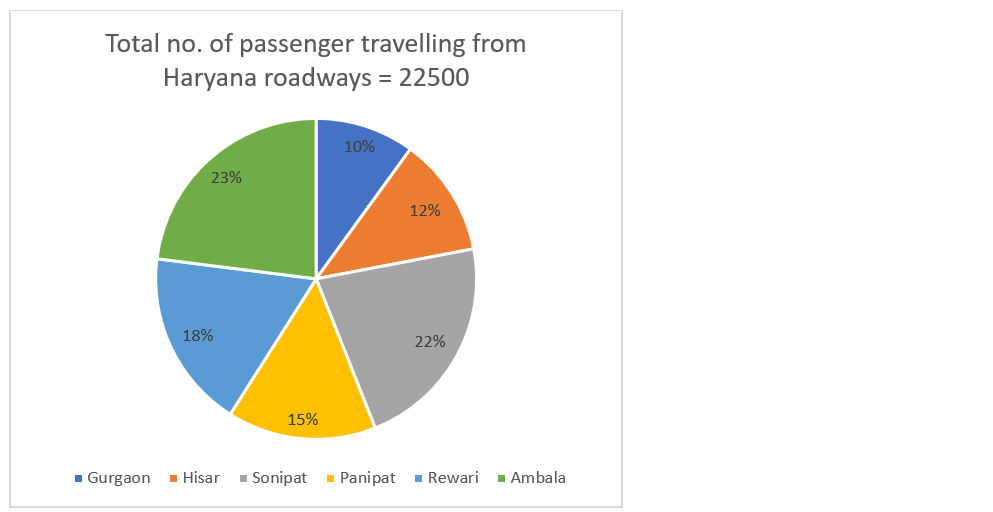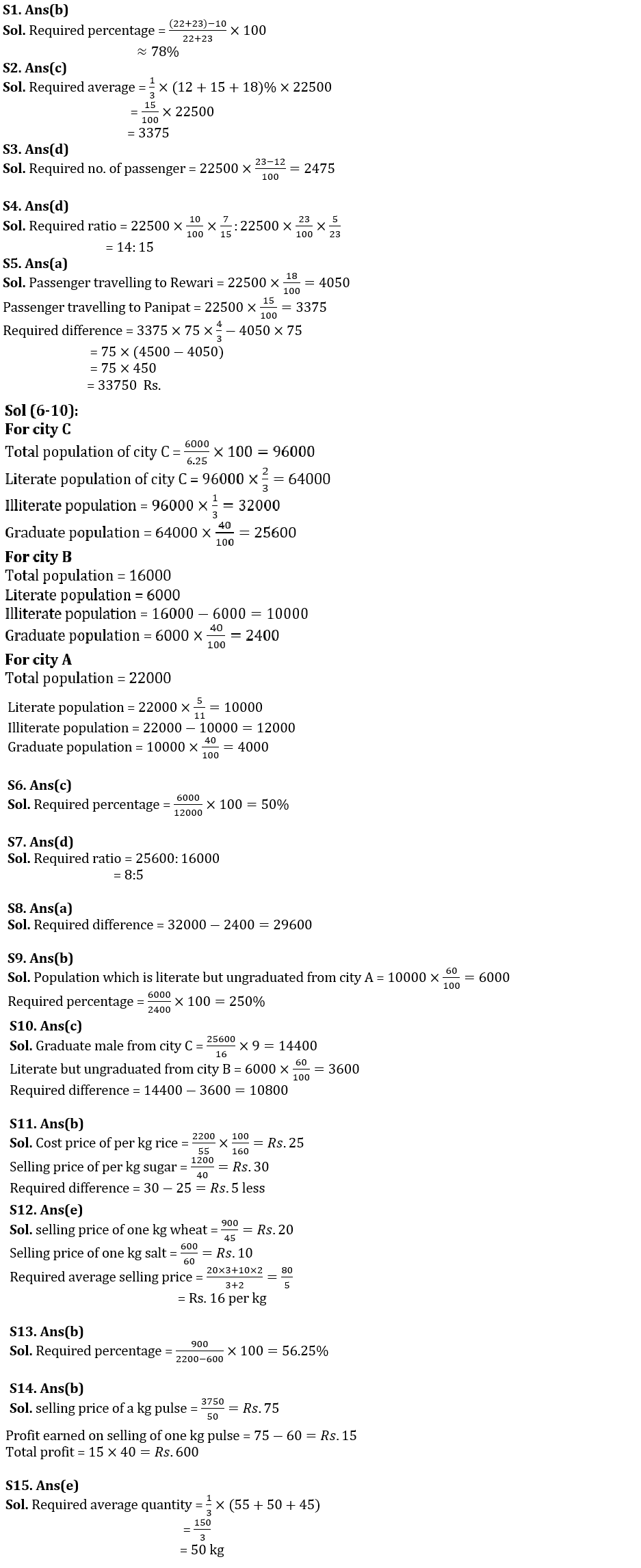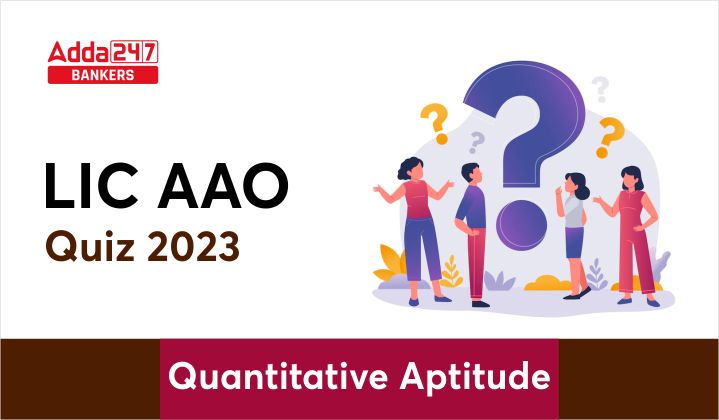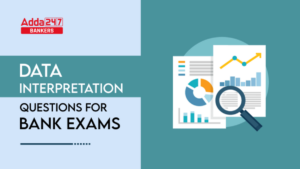Directions (1-5): Pie chart given below shows distribution of passenger travelling from Haryana roadways to different district. Read the data carefully and answer the questions.

Q1. No. of passenger who are travelling to Gurgaon are approximately how much percent less than no. of passenger travelling to Sonipat and Ambala together?
(a) 75%
(b) 78%
(c) 50%
(d) 65%
(e) 90%
Q2. What is the average no. of passengers who are travelling to Hisar, Panipat and Rewari?
(a) 3025
(b) 2075
(c) 3375
(d) 3425
(e) 3075
Q3. Passenger travelling to Hisar district are how many less than passenger travelling to Ambala?
(a) 2525
(b) 2575
(c) 2425
(d) 2475
(e) None of these.
Q4. If ratio of men to women who are travelling to Ambala and Gurgaon are 18:5 and 7:8 respectively, find ratio between men travelling to Gurgaon and women travelling to Ambala?
(a) 5:7
(b) 7:18
(c) 7:5
(d) 14:15
(e) 15:8

Directions (6-10): Paragraph given below gives information of literate and illiterate population out of total population of three cities i.e. A, B and C. Read the paragraph carefully and answer the following questions.
Total population of city A and B are 22000 and 16000 respectively. Total literate population of city B is 6000 which is 6.25% of total population of city C. Ratio of literate to illiterate population in city A and C is 5:6 and 2:1 respectively. 40% of literate population in each city is graduate.
Q6. Literate population from city B are what percent of illiterate population of city A?
(a) 100%
(b) 75%
(c) 50%
(d) 40%
(e) 60%
Q7. What is the ratio between graduate population of city C and total population of city B?
(a) 5:8
(b) 3:5
(c) 5:3
(d) 8:5
(e) 1:3
Q8. What is the difference between graduate population of city B and illiterate population of city C?
(a) 29600
(b) 28400
(c) 28600
(d) 29400
(e) None of these.
Q9. Population which is literate but ungraduated from city A are what percent graduate population of city B?
(a) 500%
(b) 250%
(c) 300%
(d) 120%
(e) 375%
Q10. If ratio of male to female in graduate population from city C is 9:7, find difference between graduate male from city C to literate but ungraduated from city B?
(a) 7200
(b) 14400
(c) 10800
(d) 12000
(e) 11800
Directions (11-15): Bar graph given below shows quantity of five different products (i.e. rice, pulse, wheat, sugar and salt) sold (in kg) by a shopkeeper and table shows total revenue (in Rs.) generated by selling these individual products.


Q11. Cost price of per kg rice is how much more or less than per kg selling price of sugar when rice is sold at 60% profit?
(a) Rs. 4 more
(b) Rs. 5 less
(c) None of these.
(d) Rs. 4 less
(e) Rs. 5 more
Q12. If 3 kg of wheat and 2 kg of salt is mixed, then what will be the selling price per kg of such mixture?
(a) Rs.15
(b) Rs. 17
(c) Rs. 14
(d) Rs. 12
(e) Rs. 16
Q13. Total revenue generated from wheat is what percent of difference between total revenue generated from rice and salt?
(a) 40.25%
(b) 56.25%
(c) 64.25%
(d) 45.50%
(e) 25.75%
Q14. If cost price of per kg pulse is Rs. 60, find profit earned on selling 40 kg of pulse (in Rs.)?
(a) 450
(b) 600
(c) 800
(d) 750
(e) 300
Q15. What is the average quantity of rice, pulse and wheat sold by shopkeeper?
(a) 45 kg
(b) 55 kg
(c) 60 kg
(d) 40 kg
(e) 50 kg
Solutions






 Data Interpretation Questions for SBI PO...
Data Interpretation Questions for SBI PO...
 Data Interpretation Questions For Bank E...
Data Interpretation Questions For Bank E...
 Quantitative Aptitude Quiz For Bank Main...
Quantitative Aptitude Quiz For Bank Main...




